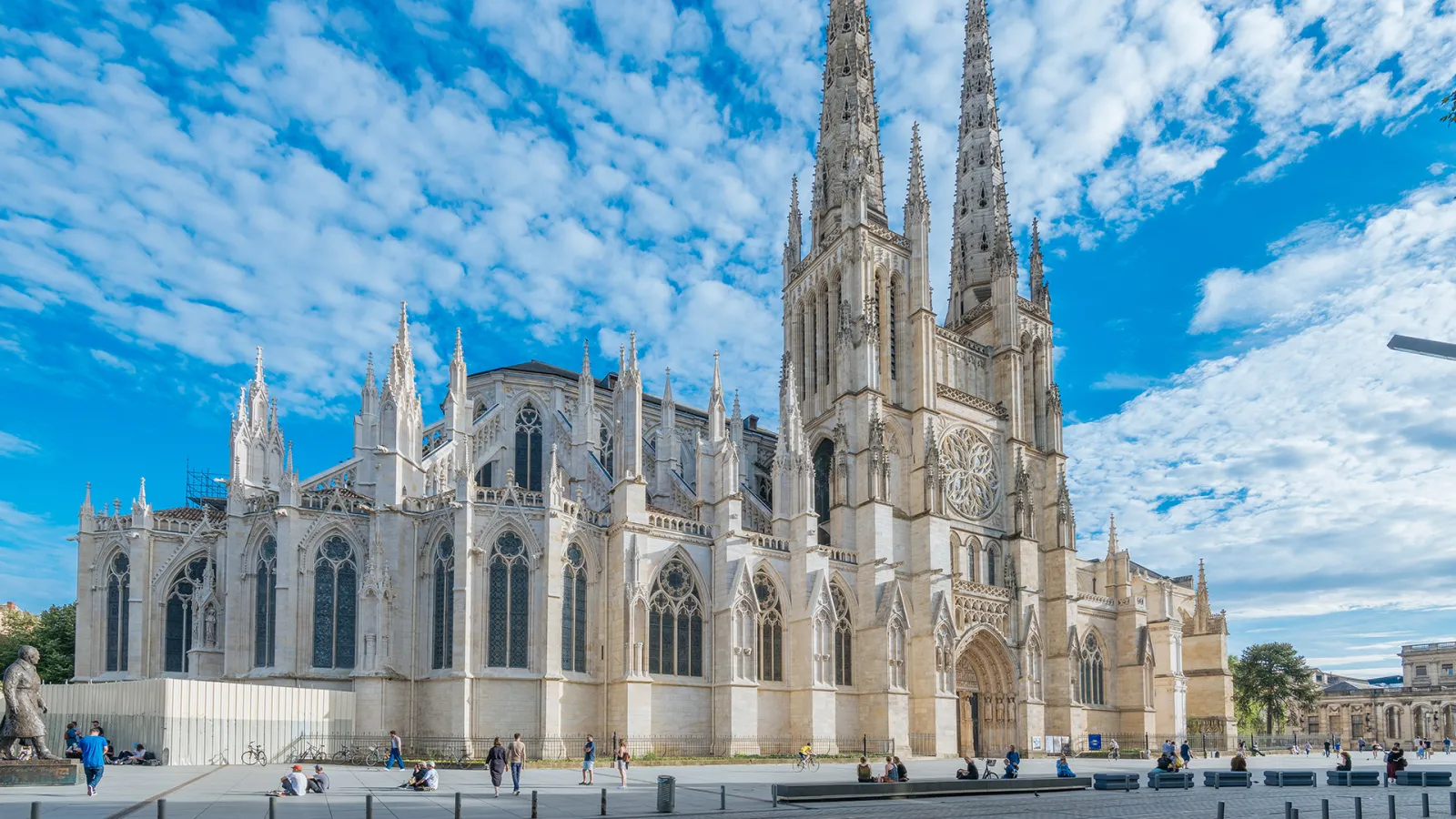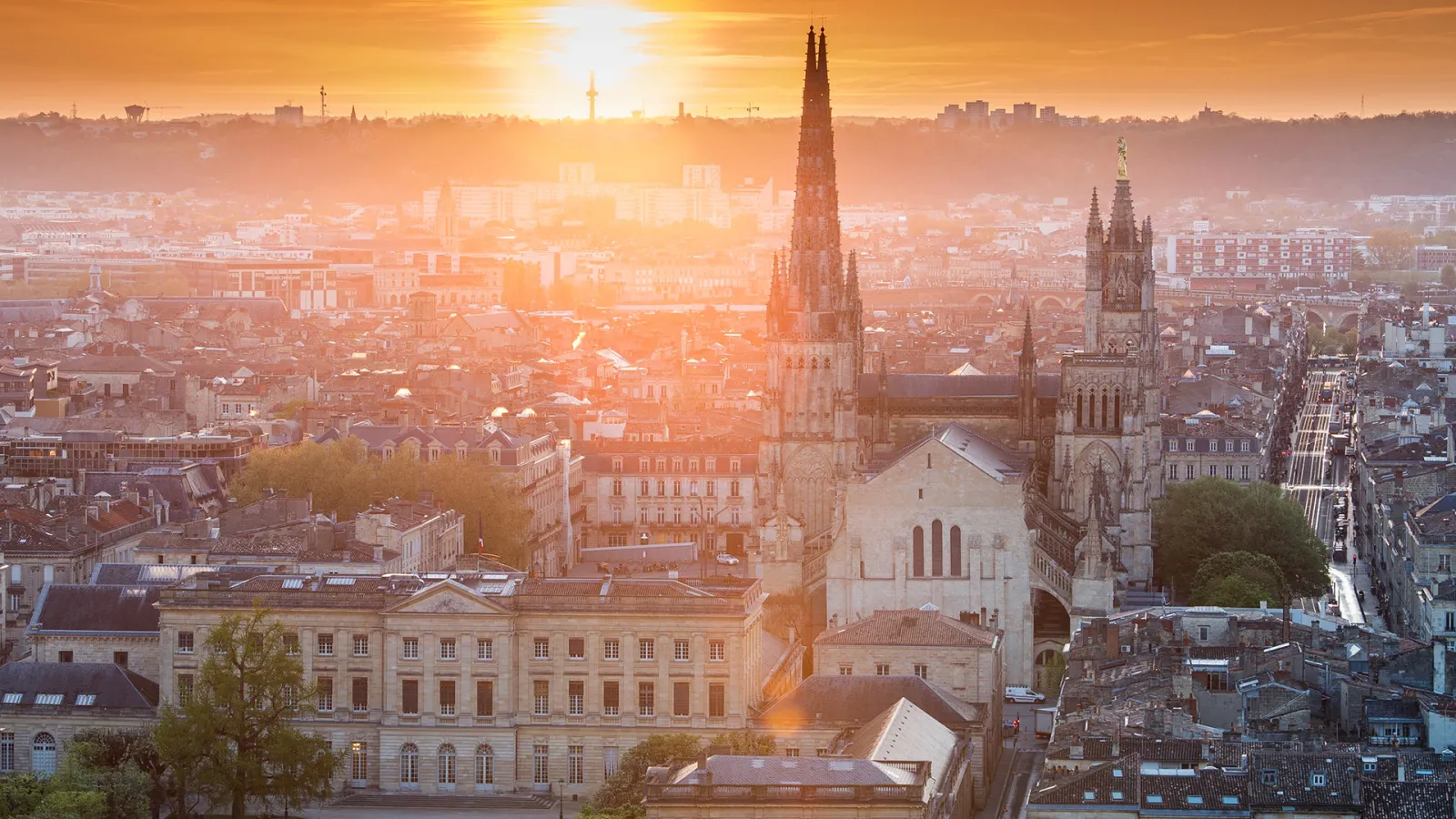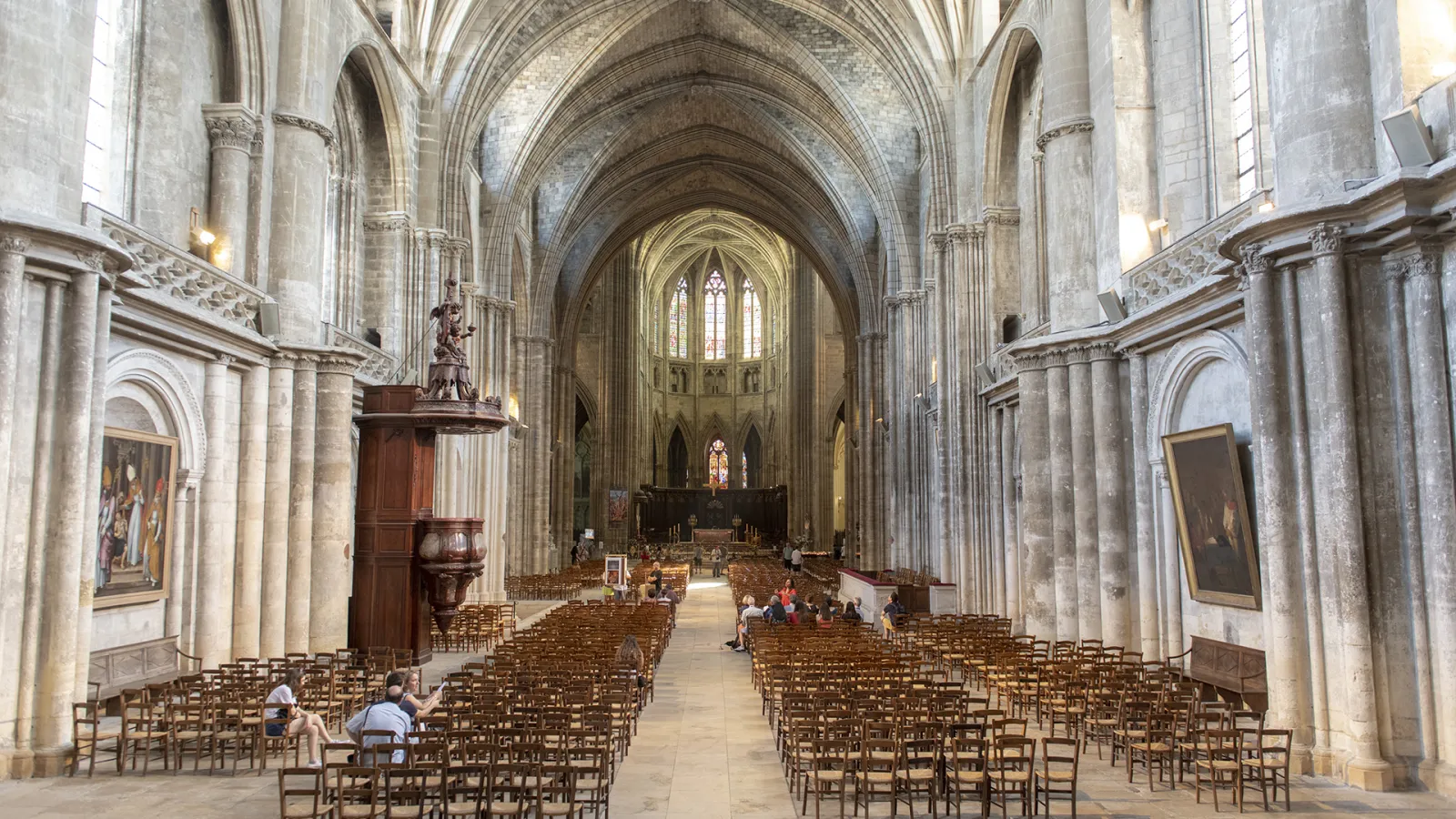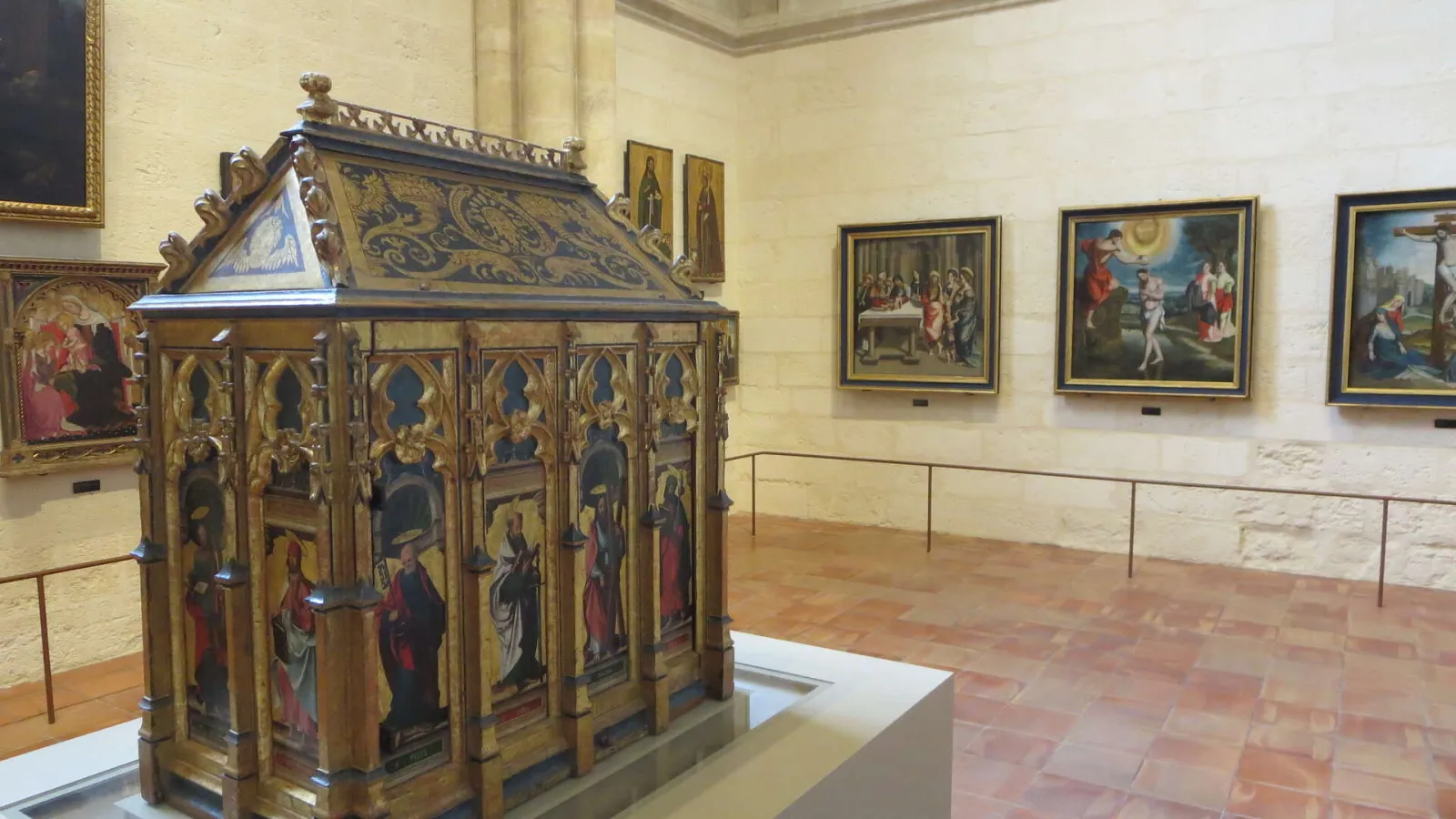Cathédrale Saint-André
Located near the Town Hall, this is the most beautiful religious monument in Bordeaux.
Obviously, it is not like the cathedrals in the Paris region. Although it is not easy to compete with Amiens, Chartres or Reims, Saint André's heterogeneous style is nevertheless unexpected and endearing, especially because of its freestanding belltower. Eleanor of Aquitaine and Louis VII, the future king of France, were married here 1137, as were Anne of Austria and Louis XIII. The cathedral was used to store fodder during the French Revolution… a sad fate for this monument that also suffered from a devastating fire in the 19th century. All of the furniture was replaced with that taken from other churches.
The well restored royal entrance in the north wall of the nave epitomises 13th century French Gothic architecture. Like many other cathedrals, sculptures were painted in bright colours at the time to attract worshippers.
Saint-André Cathedral, a veritable treasure
Throughout the centuries, the clergy has amassed true treasures within its religious edifices, accumulating remarkable liturgical art. In 1789, these possessions were requisitioned by the Nation and were used as guarantees for the new revolutionary state’s debts. Saint-André, the cathedral of the Archbishops of Bordeaux, built between the 12th and the 14th century, was thus relieved of almost all of its valuable objects, in particular its gold and silversmithery. A period of tumult followed, wherein the cathedral served as a multi-purpose space: at times a food store, at others a Temple of Reason and at others a hall used for patriotic celebrations. During this period, the church took possession of Jordaens’ Christ on the Cross, painted by one of the biggest Flemish names of the 17th century. The painting, which can still be seen, was seized by the revolutionary armies on the outskirts of Anvers and was bequeathed to the city, but there was no room to hang it in its museum.
Restored to a more “orthodox” purpose in the wake of the 1801 Concordat, it took the cathedral thirty years to cleanse its wounds. Having previously been turned into a lead factory, the stand-alone tower became a bell tower once more in 1852. However, it was only in 1947 that the episcopal seat recovered another treasure, thanks to Barthélémy Marcadé, a Bordelais who went to Paris to become a priest. He was also an art lover who collected holy antiques that dated from the 14th, 15th, 16th and 17th centuries such as paintings, statues, objects, liturgical vestments and ornaments. On returning home to live out his final days, he donated his collection to the State, which put it on display in the cathedral. Today, this treasure is open to the public, as well as a Crucifixion by Rembrandt, which is usually found in Le Mas d’Agenais but has been transferred here until summer 2018 for conservation reasons.
Accessible Wednesday and Saturday from 2.30pm to 5.30pm. Entry 2€, free entry for under 12s. Cathédrale Saint-André, place Pey-Berland 33000 Bordeaux.
Practical information
-
English, Spanish, Italian
-
Starting at 2€
Accessibility
Place Pey Berland
33000 BORDEAUX












